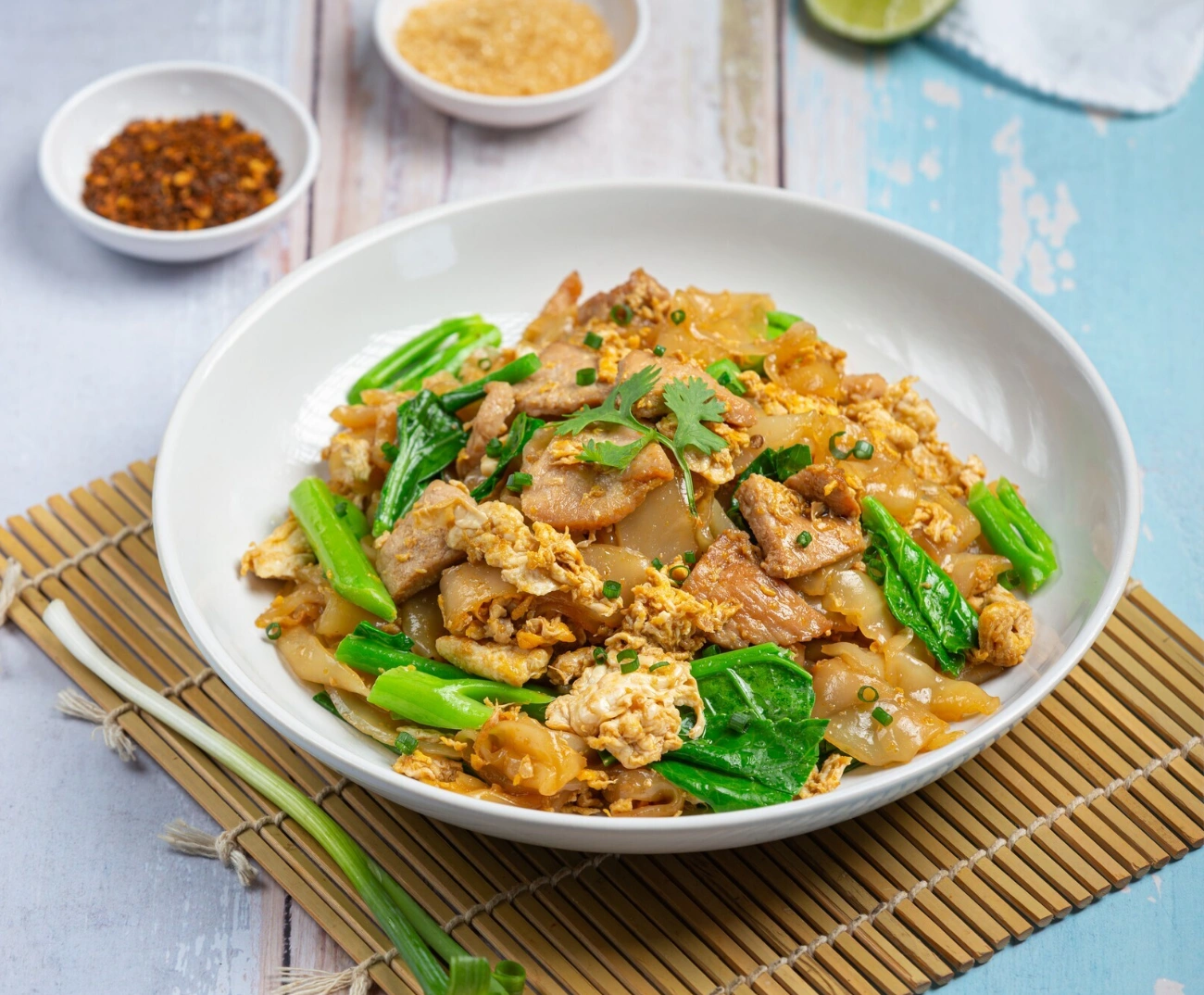

Top Health Benefits of Pad See Ew You Need to Know
Pad See Ew is a flavorful and satisfying Thai stir-fried noodle dish that offers a well-balanced combination of macronutrients. Rich in carbohydrates from the rice noodles, it provides a quick source of energy, while the inclusion of eggs and meat (such as chicken, pork, or beef) contributes high-quality protein essential for muscle repair and immune function. The vegetables, often Chinese broccoli or bok choy, supply important vitamins like vitamin A and C, along with dietary fiber that supports digestion. The dish also includes healthy fats from cooking oil and eggs, contributing to satiety and absorption of fat-soluble nutrients. When made with lean meat and plenty of vegetables, Pad See Ew can be a nutrient-dense, wholesome meal that balances taste and nourishment, especially when cooked with minimal added sugar and low-sodium sauces.
Recipe :
For 4 people
Enjoy your smoky, savory homemade Pad See Ew – better than takeout!
To prepare the best Pad See Ew, timing and heat control are crucial. Use a very hot wok or pan to achieve the signature smoky flavor (known as "wok hei"), but avoid overcrowding the pan to prevent steaming instead of frying. If using fresh wide rice noodles, separate them gently by hand to avoid breakage during cooking. For dried noodles, soak them until pliable but not mushy. Stir-fry the garlic and meat first until the meat is mostly cooked, then push everything to the side and scramble the eggs in the same pan before adding vegetables and noodles. Make sure to use both dark and light soy sauce for depth of flavor—dark soy adds color, while light soy enhances saltiness. Add sugar sparingly, and avoid over-stirring once the noodles are in, as this can cause them to break or become gummy. Finally, balance the flavors with a squeeze of lime and optional chili flakes or vinegar for brightness and heat.

Pad See Ew, in its traditional form, is not suitable for all dietary preferences and restrictions. It is not keto-friendly due to the high carbohydrate content from the rice noodles, and it is not Paleo or gluten-free, as soy sauces often contain wheat unless specifically labeled gluten-free. It also contains added sugar and sodium, which may not align with DASH or low-calorie diets unless modified. However, the dish can be adapted to be vegetarian by replacing meat with tofu or plant-based protein, and it fits well into high-protein diets when made with extra meat or eggs. With appropriate substitutions, such as tamari instead of soy sauce and shirataki or zucchini noodles instead of rice noodles, it can be made gluten-free or low-carb. Still, the classic version is best suited for those without strict dietary limitations who are looking for a protein-rich, flavorful, and energizing meal.
...